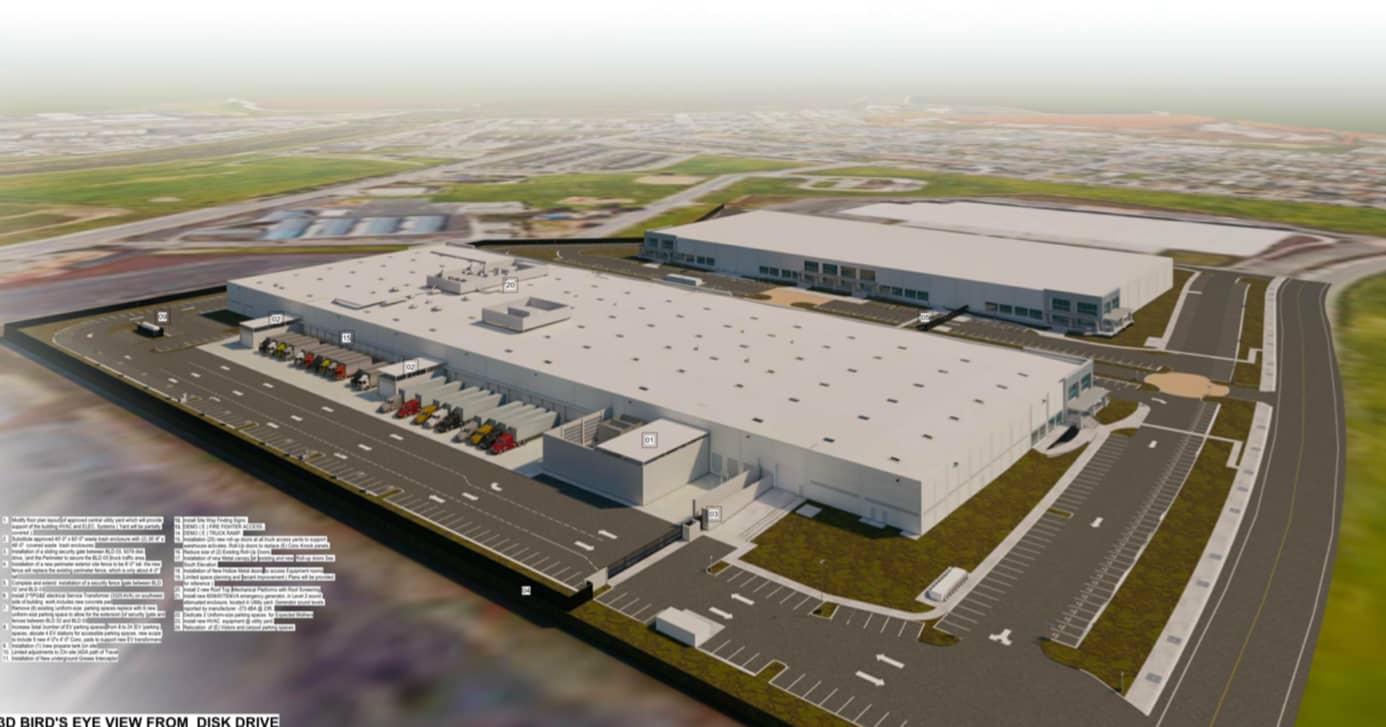Google is planning yet another Silicon Valley campus, which will sit adjacent to a new center partly devoted to hardware, according to preliminary plans obtained by CNBC.
Beginning in 2018, Google spent more than $389 million on land in north San Jose, Calif., and the company has since filed detailed preliminary proposals showing a sneak peak of its plans for the space. The plans, which are filed as an “R&D” facility, show a center for hardware operations and a separate new tech campus that would be accessible to the public, sitting between its current headquarters in Mountain View and its recently approved mega mixed-use campus in San Jose.
Dubbed “Midpoint,” the future tech campus will include five office buildings connected via a pedestrian bridge over a road. It will sit adjacent to three industrial buildings that will house some operations for its hardware division, including Nest products, according to several planning documents.
Hardware center
Google has filed plans for an “R&D” center that includes hundreds of updates to three industrial buildings. including meeting rooms, lounge areas, micro kitchens, equipment platforms, conveyor belts and a shipping warehouse, according to plans and permits viewed by CNBC. The plans mention “Google Hardware” and “Nest,” which refers to the company’s connected home business. These buildings will also house general supplies and store items like furniture for local campuses, according to a company spokesperson.
The new space comes as Google appears to be bringing more hardware efforts in-house under executive Rick Osterloh, who oversees devices and services, including Nest, the Google Home smart speakers, its flagship Pixel smartphone, and the PixelBook laptops. The hardware unit has produced minimal revenue for the company compared with its core internet services like Search, YouTube, and Google Cloud, but executives recently said it would be attempting to grab more market share this year.
Google announced arguably its most serious attempt at hardware this week when it said it will be ditching Qualcomm chips and creating its own, including those used for its flagship Pixel phone. It also has been using its own chips for its growing number of data centers across the country. In January, it completed the acquisition of fitness tracking hardware company Fitbit, which had been held up in regulatory review for more than a year.
One building in particular is getting a major overhaul. 20% of that building is designated for office space and 80% for manufacturing, storage, distribution, and other purposes, according to plans. The company has been planning the site since at least 2018, according to documents.
“New interior space will be used for device warehouse, distribution and supporting office functions,” the plans state. Plans show the space can hold up to 169 people but a Google spokesperson declined to specify how many employees it will house.
One planning document describes dressing the interior in ocean-themed items, including with art installations, murals, drift wood accents, seashell statement pieces from Etsy and a surfboard suspending on ceilings of meeting and training rooms, plans show. Meeting rooms are named after seaside areas in and around Monterey, Calif., including Cannery Row, Pacific Grove, Fisherman’s Wharf and Del Monte.
Other proposed modifications to the site include parking lot reconfigurations, new equipment pads, rooftop equipment enclosures, ADA upgrades, and updates to the faces of the buildings.
The company’s plans show the overall site features 794 parking spaces, including spaces for more than 20 large or semi trucks as well as several EV charging stations and an on-site propane tank.
Google declined to comment on most of the details of these documents.
New “Midpoint” tech campus
Sitting beside the industrial center is a more traditional tech campus dubbed “Midpoint” that will accommodate up to 3,500 employees. That campus will require landscaping and construction updates to existing offices as opposed to totally new development, according to plans viewed by CNBC.
The company did not give a timeline for when it expects Midpoint to be completed. The Mercury News previously reported on some of the features.
“The goal of the proposed project is to enhance pedestrian and bicycle safety and connectivity between the buildings and the surrounding community,” Vini Bhargava, a project executive with Google’s real estate and workplace services, wrote in a preliminary review request filed this summer.
The new campus also falls in line with the company’s shift to open itself up to its non-tech neighbors amid concerns of displacement. The proposed upgrades also come as the company plans for more employees to work in offices in the post-pandemic era.
Bhargava added that it wants to incorporate landscaping for “outdoor gathering and meeting areas to serve on-site employees.” To do so, she proposed turning concrete parking lots into green, landscaped sites that uses recycled water as well as planting trees to act as natural cooling systems and shade. The new features aim to “enhance wildlife habitat and pollination opportunities,” Bhargava added in her letter.
The preliminary request also proposes a new “transit hub” with shuttles, bike parking and transit passes for employees to reduce single occupant vehicle trips. The hub will also include showers, lockers and changing rooms for commuters.
It will have a commuter shuttle service that will bus in employees from throughout the Bay Area, which Bhargava said is “proven to significantly reduce the number of employees that drive alone to work compared to the regional average.”
